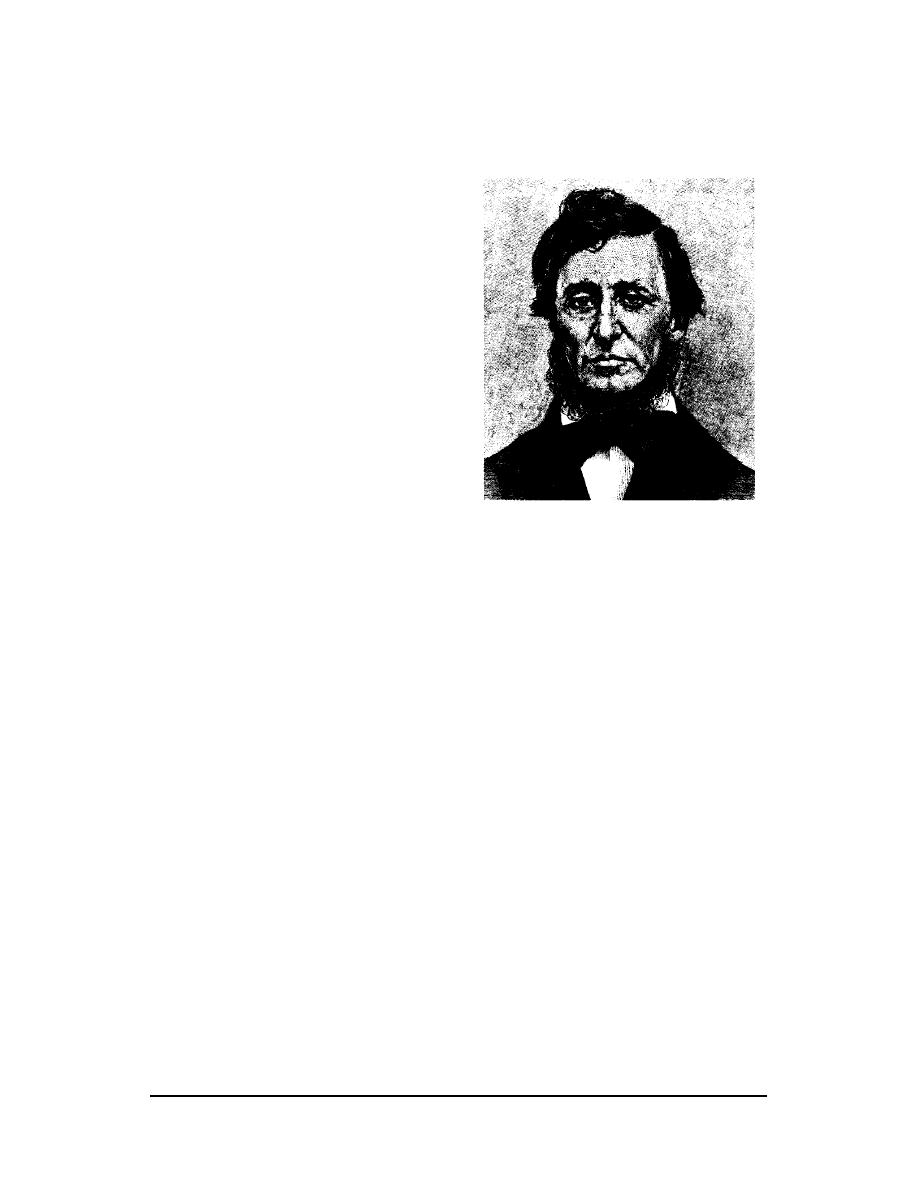
erosion of millions of acres of once-fertile farmland;
thoughtless drainage or filling of productive wetlands;
the poisoning of our waters, air, and soil with industrial
and agricultural pollutants and raw sewage; the sprawl of
cities and suburbs over farmland and open space. The
list of historic environmental abuses is almost endless.
But despite the misuse of the American environment
from the earliest days onward, there was no significant
"environmental movement" in the United States until
very recently. One extraordinary indication of this is that
no really enforceable or effective Federal law was
enacted to deal with the national problems of water, air,
or noise pollution prior to the 1970's. Similarly, preserva-
tion of the few remaining tracts of American wilderness
or wild rivers, and of endangered species of wildlife, was
not even a legally recognized objective until the late
1960's.
It is true that a few highly exceptional individuals
spoke out during the 19th Century against the degrada-
tion and exploitation of the American environment; but
we remember those individuals today precisely because
their views were advanced far beyond their respective
eras. Henry David Th,oreau wrote eloquently of nature,
the wilderness, and an environmental ethic in the middle
of the 19th Century. But he and his works were generally
ignored or ridiculed during his own lifetime, while his
con temporaries settled the American West, cut anu
burned the remaining forests, and exterminated the
Henry David Thoreau was one of the few 19th Century Americans
bison. John James Audubon painted wonderful pictures
to espouse an environmental ethic.
of American wildlife in the early and middle 1800's But
tion of wetlands, for control of urban sprawl. But they
the paying market for his pictures was largely that in
were generally ignored and scorned by the American
Europe, and practically none of his fellow Americans
macrocosm as cranks and eccentrics; most of their pleas
gave a thought to preserving the continent's disappearing
were drowned out by the roar of the American economy
wildlife heritage, even as it was lost to market hunters
in operation.
and destruction of habitat. A few 19th Century painters
The dominant American ethic of economic growth
admired and reproduced the scenic American landscape.
and development can be explained in many ways, of
But the great majority of Americans apparently thought
course. As far back as the history of Western Man dis-
that "appreciation of the landscape itself, apart from its
closes, our culture has fostered acquisitiveness, a taste for
practical uses (was) pointless and effete." 1
material comfort, an urge to master natural forces, and
The first modest, yet significant, achievements for
relative unconcern about the well-being of wild animals,
conservation were almost fortuitous developments. A few
trees, or even aboriginal men. The specific Western
extraordinary men, such as John Muir, convinced a few
civilization which evolved in North America has long
enlightened Federal officials to set aside a few areas of
regarded the vast natural resources of this continent as
the public domain as our first national parks and monu-
inexhaustible, and has used and wasted them accord-
ments. Later, through the accident of President
ingly. Only the long-delayed realization that these
McKinley's assassination, the United States unexpec-
resources are at last being outstripped by population
tedly found itself with its first "conservationist" presi-
growth and our rate of consumption has led to the un-
dent-Theodore Roosevel t Despite ferocious opposi tion
welcome and grudging recognition of "the limits to
from entrenched econo m ic interests, Roosevelt ap-
growth."
pointed officials with advanced conservationist ideas--
Emergence of the Environmental Movement
such as Gifford Pinchot of the Forest Service-and con-
tinued to set aside national monuments and parks.
Not until the pollution of water, soil, and air
From time to time thereafter the incipient U.S. con-
threatened literally to kill large numbers of Americans
servation movement had modest periods of accomplish-
with deadly poisons did the American public and their
ment -additional public lands were set aside. in every
governmental officials begin to give serious attention to
president's administration from Franklin Roosevelt's on-
the state of our neglected environment. Perhaps the most
ward; and the Fish and Wildlife Coordination Act ex-
representative distress signal by which the new "environ-
pressed but did not effectuate a pro-wildlife policy. But
mentalists" captured the attention of the press, the
for the most part America continued throughout the 19th
public, and then the government was that alarming book:
and most of the 20th Centuries to do "business as usual,"
S i l e n t Spring by the late Dr. Rachel Carson, first
with o u r p r e e m i n e n t moving f o r c e being- t h a t o f
published in 1962. That seminal publication inspired an
economic development. A tiny band of American conser-
international uproar which grew in size and intensity
vationists did plead for anti-pollution laws, for preserva-
through the decade of the 1960's culminating in the
2
D-2



 Previous Page
Previous Page
